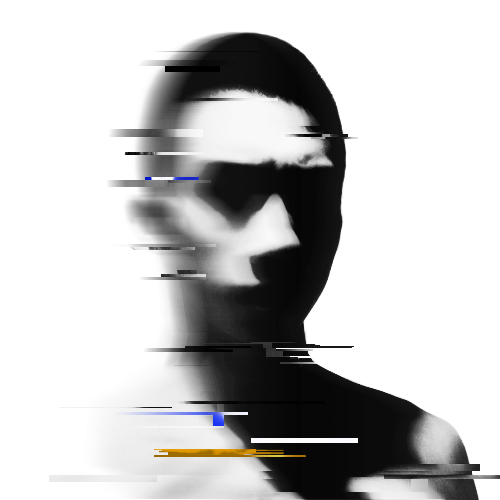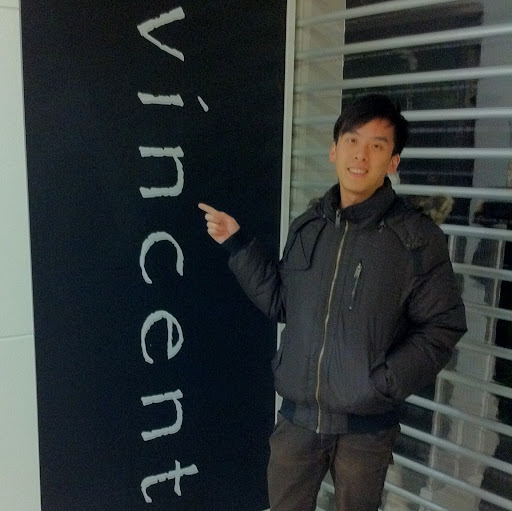Vincent Y Chow
age ~75
from Hanover Park, IL
- Also known as:
-
- Vincent S Chow
- Vincent Y Child
- Vince Y Chow
- Phone and address:
-
7980 Kingsbury Dr, Hanover Park, IL 60103
(630)2890835
Vincent Chow Phones & Addresses
- 7980 Kingsbury Dr, Bartlett, IL 60103 • (630)2890835 • (630)2890315 • (630)8555068
- Hanover Park, IL
- 2040 Belmont Ave, Chicago, IL 60618 • (773)2961660
- 1711 Olive St, Seattle, WA 98102 • (206)3286064
- San Francisco, CA
- Orinda, CA
- Wheaton, IL
- Schaumburg, IL
Work
-
Company:Counsyl - South San Francisco, CADec 2012
-
Position:Fulfillment associate
Education
-
School / High School:University of CaliforniaSep 2010
-
Specialities:B.S. in Managerial Economics
Skills
Provide excellent customer service Exce... • both written and oral Proficient in Mic... • Excel • PowerPoint • and Access; Internet & E-mail Abili...
Medicine Doctors

Vincent E. Chow
view sourceSpecialties:
Orthopaedic Surgery
Work:
Kaiser Permanente Medical Group
401 Bicentennial Way STE 230, Santa Rosa, CA 95403
(707)3934000 (phone), (707)3934234 (fax)
401 Bicentennial Way STE 230, Santa Rosa, CA 95403
(707)3934000 (phone), (707)3934234 (fax)
Education:
Medical School
University of Miami, Miller School of Medicine
Graduated: 2006
University of Miami, Miller School of Medicine
Graduated: 2006
Procedures:
Hip/Femur Fractures and Dislocations
Knee Replacement
Knee Replacement
Conditions:
Fractures, Dislocations, Derangement, and Sprains
Internal Derangement of Knee Cartilage
Osteoarthritis
Internal Derangement of Knee Cartilage
Osteoarthritis
Languages:
English
Description:
Dr. Chow graduated from the University of Miami, Miller School of Medicine in 2006. He works in Santa Rosa, CA and specializes in Orthopaedic Surgery. Dr. Chow is affiliated with Kaiser Permanente Santa Rosa Medical Center.

Vincent Elliott Chow, San Francisco CA
view sourceSpecialties:
Orthopedic Surgeon
Address:
500 Parnassus Ave, San Francisco, CA 94143
Us Patents
-
Multi-Phasic Microphotodetector Retinal Implant With Variable Voltage And Current Capability
view source -
US Patent:6389317, May 14, 2002
-
Filed:Mar 31, 2000
-
Appl. No.:09/539399
-
Inventors:Vincent Chow - Hanover Park IL
Alan Y. Chow - Wheaton IL -
Assignee:Optobionics Corporation - Wheaton IL
-
International Classification:A61N 118
-
US Classification:607 54
-
Abstract:A visible and infrared light powered retinal implant is disclosed that is implanted into the subretinal space for electrically inducing formed vision in the eye. The retinal implant includes a stacked microphotodetector arrangement having an image sensing pixel layer and a voltage and current gain adjustment layer for providing variable voltage and current gain to the implant so as to obtain better low light implant performance than the prior art, and to compensate for high retinal stimulation thresholds present in some retinal diseases. A first light filter is positioned on one of the microphotodetectors in each of the image sensing pixels of the implant, and a second light filter is positioned on the other of the microphotodetectors in the image sensing pixel of the implant, each of the microphotodetectors of the pixel to respond to a different wavelength of light to produce a sensation of darkness utilizing the first wavelength, and a sensation of light using the second wavelength, and a third light filter is positioned on a portion of the voltage and current gain adjustment layer that is exposed to light, to allow adjustment of the implant voltage and current gain of the device by use of a third wavelength of light.
-
Multi-Sensor Detector
view source -
US Patent:6392536, May 21, 2002
-
Filed:Aug 25, 2000
-
Appl. No.:09/648198
-
Inventors:Lee D. Tice - Bartlett IL
Vincent Y. Chow - Hanover Park IL -
Assignee:Pittway Corporation - St. Charles IL
-
International Classification:G08B 2900
-
US Classification:340506, 340511, 340517, 340522, 340541, 340508, 340521
-
Abstract:A multi-function detector has at least two different sensors coupled to a control circuit. In a normal operating mode the control circuit, which could include a programmed processor, processes outputs from both sensors to evaluate if a predetermined condition is present in the environment adjacent to the detector. In this mode the detector exhibits a predetermined sensitivity. In response to a failure of one of the sensors, the control circuit processes the output of the remaining operational sensor or sensors so that the detector will continue to evaluate the condition of the environment with substantially the same sensitivity.
-
Artificial Retina Device With Stimulating And Ground Return Electrodes Disposed On Opposite Sides Of The Neuroretina And Method Of Attachment
view source -
US Patent:6427087, Jul 30, 2002
-
Filed:May 4, 2000
-
Appl. No.:09/564841
-
Inventors:Alan Y. Chow - Wheaton IL
Vincent Y. Chow - Hanover Park IL -
Assignee:Optobionics Corporation - Wheaton IL
-
International Classification:A61N 108
-
US Classification:607 54, 623 663
-
Abstract:An artificial retinal device, implanted in the subretinal space of the eye in persons with certain types of retinal blindness, induces artificial vision by electrical stimulation of the remaining viable cells of the retina. The artificial retina device includes a stimulating electrode unit preferably placed in the subretinal space, and a tail-like extension housing a distant electrical return ground electrode unit that may be placed in the vitreous cavity. The stimulating electrode unit includes an array of electrode subunits. Each electrode subunit includes one or more microphotodiodes electrically connected, for example, in series to provide increased voltage and current to its microelectrode. The stimulating electrode unit and the ground return electrode of the ground return electrode unit are preferably disposed on opposite sides of the neuroretina to allow for efficient and high resolution transretinal electrical stimulation of the neuroretinal cells. Additional photodiodes may be incorporated into the circuitry of the artificial retina device to provide additional bias voltage and current to the microelectrode subunits of the stimulating electrode unit.
-
Integral Differential Optical Signal Receiver
view source -
US Patent:6574022, Jun 3, 2003
-
Filed:Mar 19, 2001
-
Appl. No.:09/812214
-
Inventors:Alan Y. Chow - Wheaton IL 60187
Vincent Y. Chow - Hanover Park IL -
Assignee:Alan Y. Chow - Wheaton IL
-
International Classification:H04B 1000
-
US Classification:359189, 385 83, 385 14, 385 50, 359191, 359195
-
Abstract:An optical signal receiver for rapid and error free translation of optical signals into electrical signals is disclosed. The receiver is coupled to a light source. The light source is amplified and then split into two segments. One of the segments is delayed by a specific amount of time. Both segments are optically coupled to a photo detector. Each photo detector is coupled in parallel and are connected by two output terminals. When the voltage output by each photo detector is equal, the output terminals are balanced and will not have any voltage. The circuit will provide a voltage output on the terminal only on differential photocurrents sensed by the detector elements. The quiescent magnitude of the voltage output is a function of the value of the reverse bias voltage applied by the two voltage sources.
-
Wave Length Associative Addressing System For Wdm Type Light Packet Steering
view source -
US Patent:6609840, Aug 26, 2003
-
Filed:Apr 5, 2001
-
Appl. No.:09/828337
-
Inventors:Alan Y. Chow - Wheaton IL 60187
Vincent Y. Chow - Hanover Park IL -
Assignee:Alan Y. Chow - Wheaton IL
-
International Classification:H04J 400
-
US Classification:398102, 398 47, 398 51, 398 53, 398 54, 398 77, 398 79, 398 82
-
Abstract:A system and method are disclosed for carrying additional information data on multiplexed signals which are modulated on different wavelengths. An information code such as an address or control data for a particular data signal at a selected wavelength is overlaid on the parallel multiplexed signals. The information code may be overlaid by attenuation or changing the amplitude of the different signals. A separate marker channel at a separate wavelength is also multiplexed with the data signals to indicate the presence of an information code. An optical data detector array is used to optically determine the encoded address by comparing the signals with light levels and producing an output when a matching code is detected. The optical data detector array uses a series of detectors each corresponding to the wavelength of light signals carrying the information data. The detectors each have two photo detectors which are wired in parallel with each other to produce a voltage output when different light levels are detected on the two photo detectors.
-
Multi-Phasic Microphotodiode Retinal Implant And Adaptive Imaging Retinal Stimulation System
view source -
US Patent:6611716, Aug 26, 2003
-
Filed:Apr 2, 2001
-
Appl. No.:09/824519
-
Inventors:Vincent Chow - Hanover Park IL
Alan Y. Chow - Wheaton IL -
Assignee:Optobionics Corporation - Naperville IL
-
International Classification:A61N 118
-
US Classification:607 54
-
Abstract:An artificial retina device and a method for stimulating and modulating its function is disclosed. The artificial retina device is comprised of plural multi-phasic microphotodiode subunits. In persons suffering from blindness due to outer retinal layer damage, a plurality of such devices, when surgically implanted into the subretinal space, may allow useful formed artificial vision to develop. One device, called a MMRI-4, transduces light into electric currents to stimulate the retina. The four microphotodiode subunits of the MMRI-4 are oriented so that each flattened sides of the MMRI-4 has two subunits in a PiN configuration and two subunits in a NiP configuration. The flattened cubic shape of the MMRI-4 will allow one or the other of the two flattened sides to be preferentially directed toward incident light when implanted in the subretinal space. Because both the PiN and NiP configurations are present on each of the flattened sides of the MMRI-4, electric currents which produce the sensation of light from a PiN current, or darkness from a NiP current, can be induced regardless of which the flattened photoactive sides faces incident light. Filter layers disposed on the PiN configuration will allow visible light to induce a PiN current, and filter layers disposed on the NiP configuration will allow infrared light to induce a NiP current.
-
Wavelength Associative Addressing System For Wdm Type Light Packet Steering
view source -
US Patent:6904239, Jun 7, 2005
-
Filed:Jul 9, 2003
-
Appl. No.:10/615857
-
Inventors:Alan Y. Chow - Wheaton IL, US
Vincent Y. Chow - Hanover Park IL, US -
International Classification:H04J014/00
H04J014/08
H04B010/12
H04B010/06 -
US Classification:398 49, 398 53, 398 57, 398102, 398141, 398202, 398207, 398214
-
Abstract:A system and method are disclosed for carrying additional information data on multiplexed signals which are modulated on different wavelengths. An information code such as an address or control data for a particular data signal at a selected wavelength is overlaid on the parallel multiplexed signals. The information code may be overlaid by attenuation or changing the amplitude of the different signals. A separate marker channel at a separate wavelength is also multiplexed with the data signals to indicate the presence of an information code. An optical data detector array is used to optically determine the encoded address by comparing the signals with light levels and producing an output when a matching code is detected. The optical data detector array uses a series of detectors each corresponding to the wavelength of light signals carrying the information data. The detectors each have two photo detectors which are wired in parallel with each other to produce a voltage output when different light levels are detected on the two photo detectors.
-
Artificial Retina Device With Stimulating And Ground Return Electrodes Disposed On Opposite Sides Of The Neuroretina And Method Of Attachment
view source -
US Patent:7003354, Feb 21, 2006
-
Filed:May 9, 2002
-
Appl. No.:10/142277
-
Inventors:Alan Y. Chow - Wheaton IL, US
Vincent Y. Chow - Hanover Park IL, US -
Assignee:Optobionics Corporation - Wheaton IL
-
International Classification:A61N 1/18
-
US Classification:607 54, 623 663
-
Abstract:An artificial retinal device, implanted in the subretinal space of the eye in persons with certain types of retinal blindness, induces artificial vision by electrical stimulation of the remaining viable cells of the retina. The artificial retina device includes a stimulating electrode unit preferably placed in the subretinal space, and a tail-like extension housing a distant electrical return ground electrode unit that may be placed in the vitreous cavity. The stimulating electrode unit includes an array of electrode subunits. Each electrode subunit includes one or more microphotodiodes electrically connected, for example, in series to provide increased voltage and current to its microelectrode. The stimulating electrode unit and the ground return electrode of the ground return electrode unit are preferably disposed on opposite sides of the neuroretina to allow for efficient and high resolution transretinal electrical stimulation of the neuroretinal cells. Additional photodiodes may be incorporated into the circuitry of the artificial retina device to provide additional bias voltage and current to the microelectrode subunits of the stimulating electrode unit.
Name / Title
Company / Classification
Phones & Addresses
Owner
Sutech Optical
Mfg Optical Instruments/Lenses Management Consulting Services
Mfg Optical Instruments/Lenses Management Consulting Services
7980 Kingsbury Dr, Hanover Park, IL 60133
(630)8555068
(630)8555068
Owner
Sce Engineers
Accounting · Engineering Services
Accounting · Engineering Services
690 Monterey Blvd #2, San Francisco, CA 94127
(415)3370775, (415)3370778
(415)3370775, (415)3370778
Principal
Vega Technology & Systems
Optical Instruments and Consulting
Optical Instruments and Consulting
7980 Kingsbury Dr, Hanover Park, IL 60133
First Nutri LLC
Misc Personal Services
Misc Personal Services
2385 16 Ave, San Francisco, CA 94116
Vincent Chow MD
Orthopedics
Orthopedics
500 Parnassus Ave, San Francisco, CA 94122
(415)4766043
(415)4766043
People & Properties Sotheby's
Homes & Residential Real Estate
Homes & Residential Real Estate
360 Diablo Rd, Danville, CA 94526
(925)8389700, (925)8378569, (925)8372200
(925)8389700, (925)8378569, (925)8372200
Manager
E-CUBE ENERGY, INC
Mfg Turbines/Generator Sets
Mfg Turbines/Generator Sets
Po, Saratoga, CA 95070
4156 Technology Dr, Fremont, CA 94538
PO Box 3213, Saratoga, CA 95070
4156 Technology Dr, Fremont, CA 94538
PO Box 3213, Saratoga, CA 95070
President
CHOW SANG SANG JEWELLERY COMPANY LIMITED, INC
2163 Vine St, Berkeley, CA 94709
License Records
Vincent Chow
Address:
1368 Bush St, San Francisco, CA
License #:
18345 - Expired
Category:
Professional
Issued Date:
Apr 26, 1985
Expiration Date:
Jun 30, 2002
Resumes

Vincent Chow
view source
Vincent Chow
view source
Independent Semiconductors Professional
view sourceLocation:
Greater Chicago Area
Industry:
Semiconductors

Vincent Chow
view sourceLocation:
United States

Vincent Chow
view sourceLocation:
United States

Vincent Chow San Francisco, CA
view sourceWork:
Counsyl
South San Francisco, CA
Dec 2012 to Sep 2014
Fulfillment Associate Aggie Host
Davis, CA
Nov 2011 to Jun 2012
Security Guard California Academy of Sciences
San Francisco, CA
Dec 2008 to Dec 2010
Security Guard Ono's Hawaiian BBQ
San Francisco, CA
Mar 2008 to Sep 2008
Cashier
South San Francisco, CA
Dec 2012 to Sep 2014
Fulfillment Associate Aggie Host
Davis, CA
Nov 2011 to Jun 2012
Security Guard California Academy of Sciences
San Francisco, CA
Dec 2008 to Dec 2010
Security Guard Ono's Hawaiian BBQ
San Francisco, CA
Mar 2008 to Sep 2008
Cashier
Education:
University of California
Sep 2010 to Jun 2012
B.S. in Managerial Economics
Sep 2010 to Jun 2012
B.S. in Managerial Economics
Skills:
Provide excellent customer service Excellent communication skills, both written and oral Proficient in Microsoft Office - Word, Excel, PowerPoint, and Access; Internet & E-mail Ability to multi-task and manage time to meet deadlines Ability to work good in a group as well as independently as needed Possession of a can-do and positive attitude Good problem solving skills Self-Starter Analytical and very detail oriented
Googleplus

Vincent Chow
Education:
POPO 齋

Vincent Chow

Vincent Chow
Work:
Logan HR Management Inc. - Partner

Vincent Chow

Vincent Chow
Tagline:
Hmm complicated enough!

Vincent Chow

Vincent Chow

Vincent Chow
Myspace

Vincent Chow Log
view source
Vincent Jonathan Chow
view source
Vincent W Chow
view source
Vincent Chow
view source
Vincent Chow Yui Heng
view source
Vincent Chow
view source
L Vincent Chow
view source
Vincent Chow
view sourceClassmates

Vincent Chow
view sourceSchools:
Bair Middle School Sunrise FL 1994-1998
Community:
Michelle Helmeczy, Craig Robinson, Alfred Natale, Becky Schemenauer

Vincent Chow
view sourceSchools:
Traphagen Elementary School Waldwick NJ 1971-1972, Bethany Christian School Taipei GA 1972-1975
Community:
Naomi Lusk, Ella Lau, George Dean, Steve Weber, Grant Abel

Vincent Chow | Port Moody...
view source
Bethany Christian School,...
view sourceGraduates:
Vincent Chow (1972-1975),
Anna Merrell (1983-1991),
Diana Hsiao (1981-1983),
Warren Chang (1990-1991),
Anne Garvin (1970-1974),
Gordon Kung (1993-1997)
Anna Merrell (1983-1991),
Diana Hsiao (1981-1983),
Warren Chang (1990-1991),
Anne Garvin (1970-1974),
Gordon Kung (1993-1997)

Traphagen Elementary Scho...
view sourceGraduates:
Vincent Chow (1971-1972),
Lori Hampson (1981-1988),
Steven Cartier (1980-1982)
Lori Hampson (1981-1988),
Steven Cartier (1980-1982)

University of California ...
view sourceGraduates:
Frederic Zinn (1979-1982),
Vincent Chow (1990-1994),
Michael Reynolds (1984-1987),
Marc Coopersmith (1996-1999),
Laurence Marks (1975-1978)
Vincent Chow (1990-1994),
Michael Reynolds (1984-1987),
Marc Coopersmith (1996-1999),
Laurence Marks (1975-1978)

University of California ...
view sourceGraduates:
Andy Allbritten (1992-1994),
Kathleen Williams (1975-1977),
Vincent Chow (1990-1994),
Joyce Rowland (1979-1981),
Rose Catherine Pinkney (1986-1988)
Kathleen Williams (1975-1977),
Vincent Chow (1990-1994),
Joyce Rowland (1979-1981),
Rose Catherine Pinkney (1986-1988)
Youtube
Flickr
Plaxo

Rikki Vincent Chow
view sourceToronto
Get Report for Vincent Y Chow from Hanover Park, IL, age ~75




















